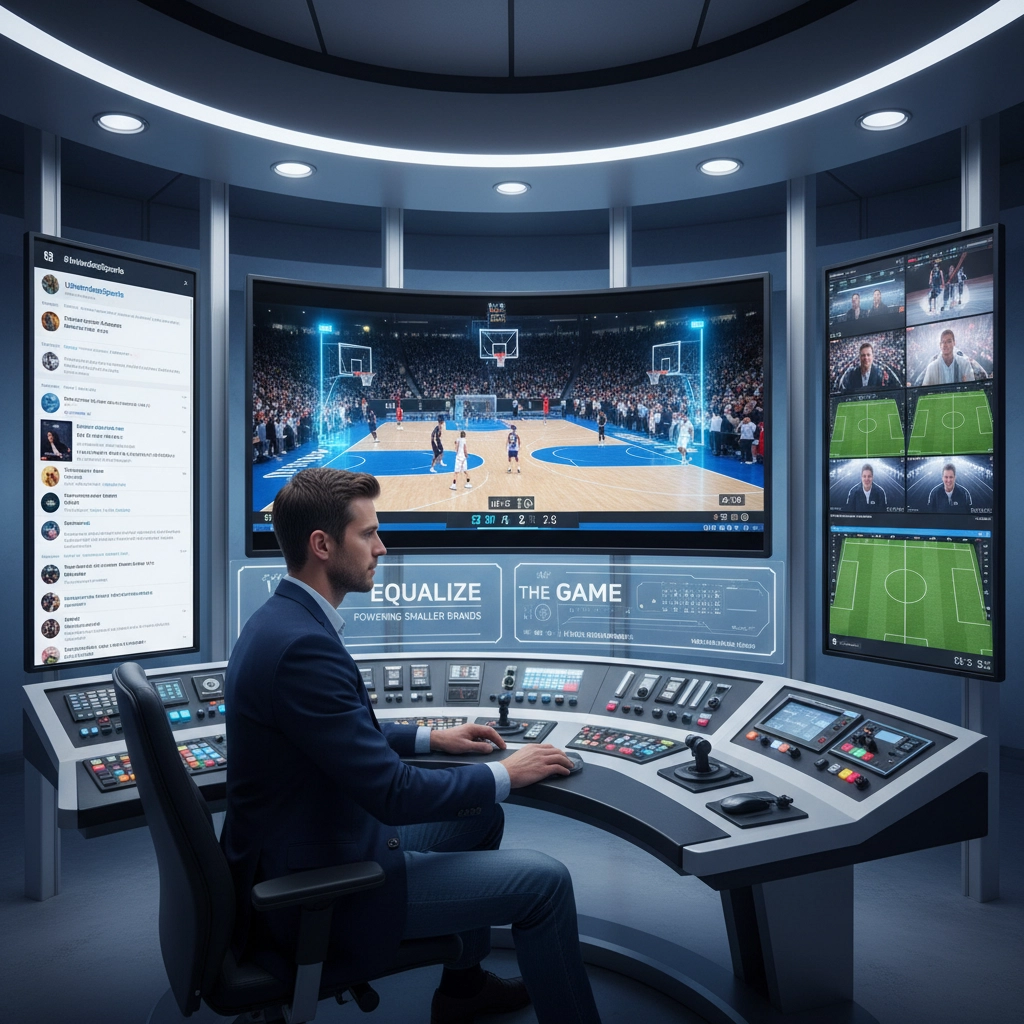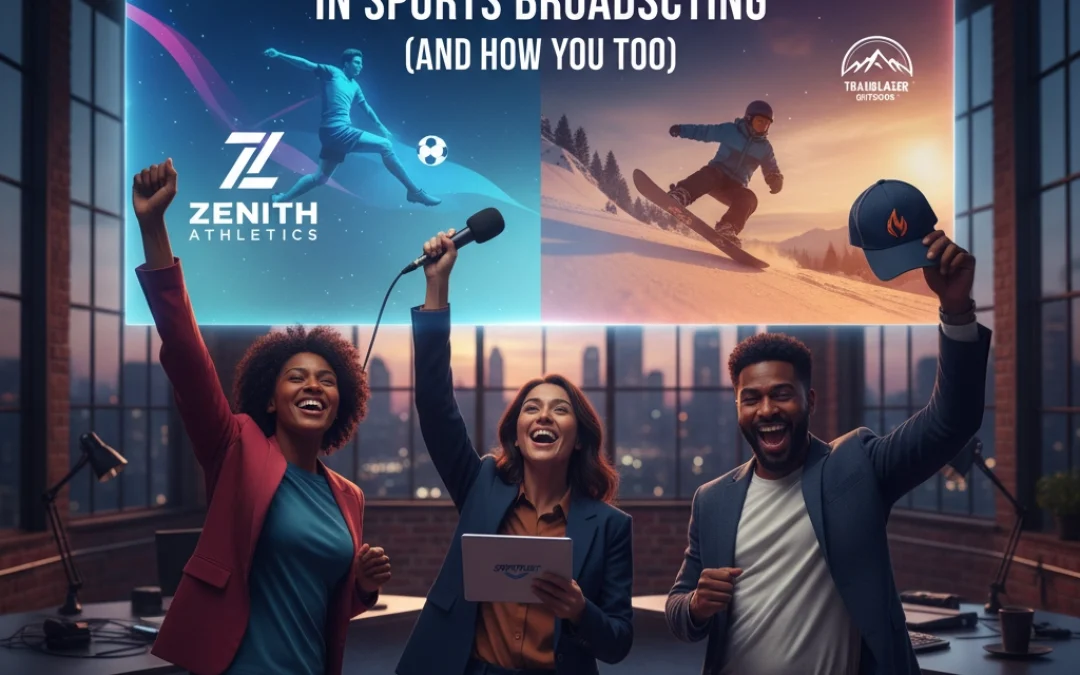The sports broadcasting landscape has fundamentally shifted. Small brands are no longer relegated to the sidelines, watching major corporations dominate prime advertising spots. Instead, they're outmaneuvering giants with smarter strategies, targeted approaches, and a deep understanding of modern sports media dynamics.
Here's the reality: it's never been easier for brands of all sizes to reach highly engaged audiences through live sports. You don't need Super Bowl budgets to make a meaningful impact. You need strategic thinking.
The New Playing Field Favors Smart Over Big
Traditional sports advertising operated on a simple principle: the biggest budget wins. Those days are over. Today's sports broadcasting environment rewards precision, creativity, and understanding audience behavior over raw spending power.
Sports viewers represent one of the most engaged demographics in all media. Research shows 48% of viewers watch more than five hours of sports per week, with one-third watching almost every match their favorite team plays. This level of commitment creates exceptional value for advertisers: but only if you know how to tap into it.

The key difference between successful small brands and struggling ones? They've stopped trying to compete with corporate giants on scale and started competing on relevance and timing.
Why Sports Audiences Are Perfect for Small Brand Success
Sports demand real-time attention in ways that on-demand content simply cannot match. When someone watches Netflix, they pause for bathroom breaks, check their phone, or scroll through social media. Sports viewers? They're locked in, focused, and emotionally invested.
This creates three distinct advantages for small brands:
Captive Attention: Sports viewers can't fast-forward through your message. They're present, engaged, and paying attention.
Emotional Connection: Sports evoke genuine emotions. Happy fans make purchasing decisions. Disappointed fans seek comfort purchases. Smart brands position themselves within these emotional moments.
Social Amplification: Sports are inherently social experiences. Many viewers watch games together, whether in living rooms, bars, or streaming with friends online. This co-viewing behavior boosts reach per impression, giving you more value for each ad served.
The Cost-Effective Season-Long Strategy
Here's where small brands consistently outperform their larger competitors: they focus on season-long engagement rather than expensive tentpole moments.
While corporations spend millions on single Super Bowl spots, smart small brands capitalize on engagement throughout entire seasons. You connect with dedicated sports fans regularly, building relationships at a fraction of traditional advertising costs.

Consider this approach: instead of competing for one expensive playoff advertisement, invest in consistent presence during regular season games. Your cost per impression drops dramatically, but your relationship-building potential increases exponentially.
Technology Has Leveled the Playing Field
Modern sports broadcasting technology has democratized access in ways that benefit smaller brands disproportionately. AI-powered highlights push clips to social feeds seconds after they happen. Real-time, fan-first content creates personalized experiences that put viewers in the spotlight.
Advanced production tools now make complex workflows feel effortless, dramatically reducing the technical barriers and costs that previously favored larger brands. You can create professional-quality content and engage with sports audiences using the same technological infrastructure as major corporations.
The rise of streaming platforms has forced traditional broadcasters to rethink their strategies, creating new opportunities for smaller brands to participate in interactive content and behind-the-scenes access. Social media integration amplifies reach and creates real-time conversations around events, bringing fans closer to the action in cost-effective ways.
Brand Safety: Sports Broadcasting's Hidden Advantage
Sports broadcasting offers a brand-safe environment that's significantly less controversial than other advertising contexts. You can confidently advertise during sports without worrying about your messages appearing alongside problematic content.
This brand safety advantage allows you to maintain brand integrity while building audience trust: something particularly valuable for smaller brands that can't afford reputation damage.

The Selective Media Buying Advantage
Super Bowl ads command massive budgets because they capture attention on a massive scale. But you don't need to go that big. Being selective with your media purchases allows you to reach ideal customers at your desired scale without breaking the bank.
This selective approach provides several strategic advantages:
Precise Targeting: Focus on specific sports, teams, or geographic regions that align with your customer base.
Budget Optimization: Spread your investment across multiple touchpoints rather than one expensive moment.
Testing Opportunities: Try different approaches, measure results, and optimize based on actual performance data.
Relationship Building: Develop ongoing relationships with sports media properties rather than one-time transactions.
Creator Community Access Changes Everything
The rise of micro-influencers and athlete partnerships has created new pathways for small brands to connect with specific audience segments. These collaborations offer authenticity and trust that often exceed what traditional large-scale advertising achieves.
Focus on building relationships with athletes and sports creators who align with your brand values and target demographics. These partnerships often provide better engagement rates and more authentic connections than traditional celebrity endorsements, at a fraction of the cost.

Your Action Plan for Sports Broadcasting Success
Step One: Map Your Season Strategy
Don't think in terms of individual games or events. Map out entire sports seasons that align with your business cycles and customer behavior patterns. Identify consistent touchpoints throughout the season where you can build relationships with dedicated fans.
Step Two: Embrace Technology Democratization
Take advantage of frictionless production technologies and AI-powered tools now available at accessible price points. These innovations allow you to create professional-quality sports content without traditional production overhead.
Step Three: Develop Social Integration
Create campaigns that integrate seamlessly with social media platforms where sports conversations naturally occur. Focus on content that encourages sharing and real-time engagement during live events.
Step Four: Partner Strategically
Build relationships with sports media properties, micro-influencers, and local sports personalities who can amplify your message authentically within their communities.
The Partnership That Makes the Difference
Navigating sports media buying requires expertise, relationships, and strategic insight. That's where partnering with SportsMedia.tv becomes essential. With deep industry connections and proven strategies for maximizing small brand impact in sports broadcasting, SportsMedia.tv helps you compete effectively without corporate-sized budgets.
The sports broadcasting transformation has created an environment where agility, authenticity, and strategic thinking often triumph over raw budget size. Small brands now have unprecedented opportunities to win big in this dynamic landscape.

Remember: you don't need the biggest budget to make the biggest impact. You need the smartest strategy, the right partnerships, and the determination to think differently about sports media buying.
The playing field has changed. The question isn't whether you can compete( it's whether you're ready to win.)


Recent Comments